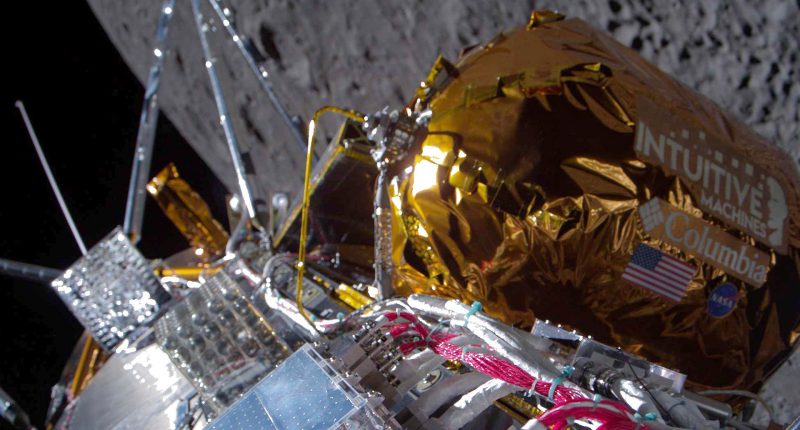
A slew of robotic missions
Since then, only China, India, and Japan have reached this same accomplishment.
For the first time in the 21st century, all three traveled to the moon in robotic vehicles.
The feats were accomplished by Japan and India in the last six months alone, long after the US-Soviet space competition had ended.
The US is still the only nation to have sent people to the moon, most recently with the Apollo 17 mission in 1972.
Bringing the heat
The sun will be up at Malapert A by the time Odysseus arrives, which contributes to the mission’s shortened timeline.
Radiators integrated into the spacecraft are supposed to keep it from overheating because during the day, the landing site sizzles at around 212 degrees Fahrenheit (100 degrees Celsius), Space.com says.
Mission is limited
Odysseus is not equipped with any heaters on board.
This means that the electronics will not survive through the night.
Experts have predicted that observations will continue until sometime after sunset.
More on the mission
Odysseus launched from Earth on February 15, in a six-day trip to the moon.
The craft is carrying 12 payloads, six of them being NASA science and technology instruments, according to Space.com.
The spacecraft then performed maneuvers yesterday which put it in a circular orbit around the moon.
About Malapert A
Odysseus would aim for a landing spot the size of an American football field because Malapert A is comparatively level and safe to land on, according to Jack Burns, the principal investigator for one of the instruments onboard Odie, per Space.com.
The spacecraft will mostly use onboard navigation software and real-time imagery during descent to modify its speed and softly touch down close to the crater.
“It’s a new place to land,” Burns told the outlet. “I think Intuitive Machines has done everything it can to prepare.”
Original landing location changed
The second location selected for Odysseus’s expedition, known as IM-1, was Malapert A, according to Space.com.
First, there was one in Oceanus Procellarum, the largest lunar basaltic plain and possible landing location for NASA’s Artemis program, which aims to send humans back to the moon for the first time since the Apollo era.
However, due to concerns about polluting the area in the event that Odysseus crashed, Intuitive Machines relocated the landing place to Malapert A last year.
“Landing near Malapert A also will help mission planners understand how to communicate and send data back to Earth from a location that is low on the lunar horizon,” NASA said in a statement.









